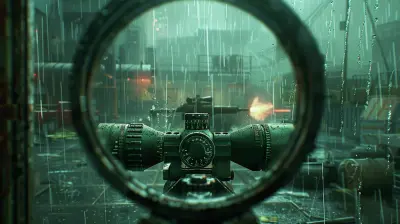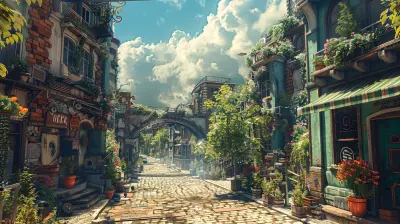When Cinematics Meet Combat: Stunning Visuals in Third-Person Shooters
27 August 2025
Let’s be real for a second—there’s something magical about third-person shooters that first-person games just can’t replicate. It’s not just about dodging bullets or landing the perfect headshot. It’s about how the action unfolds like a movie, with every explosion, every melee takedown, and every intense stare from your character captured in all its beautifully choreographed glory.
In recent years, third-person shooters have evolved far beyond simple run-and-gun mechanics. The line between gameplay and cinematics is blurring in ways that make us sometimes wonder—am I still playing, or am I watching a blockbuster? So if you’re someone who appreciates a good firefight and some jaw-dropping visuals, you're in for a treat.
Let’s dive deep into how third-person shooters are rewriting the rulebook by combining stunning visuals with heart-pounding combat.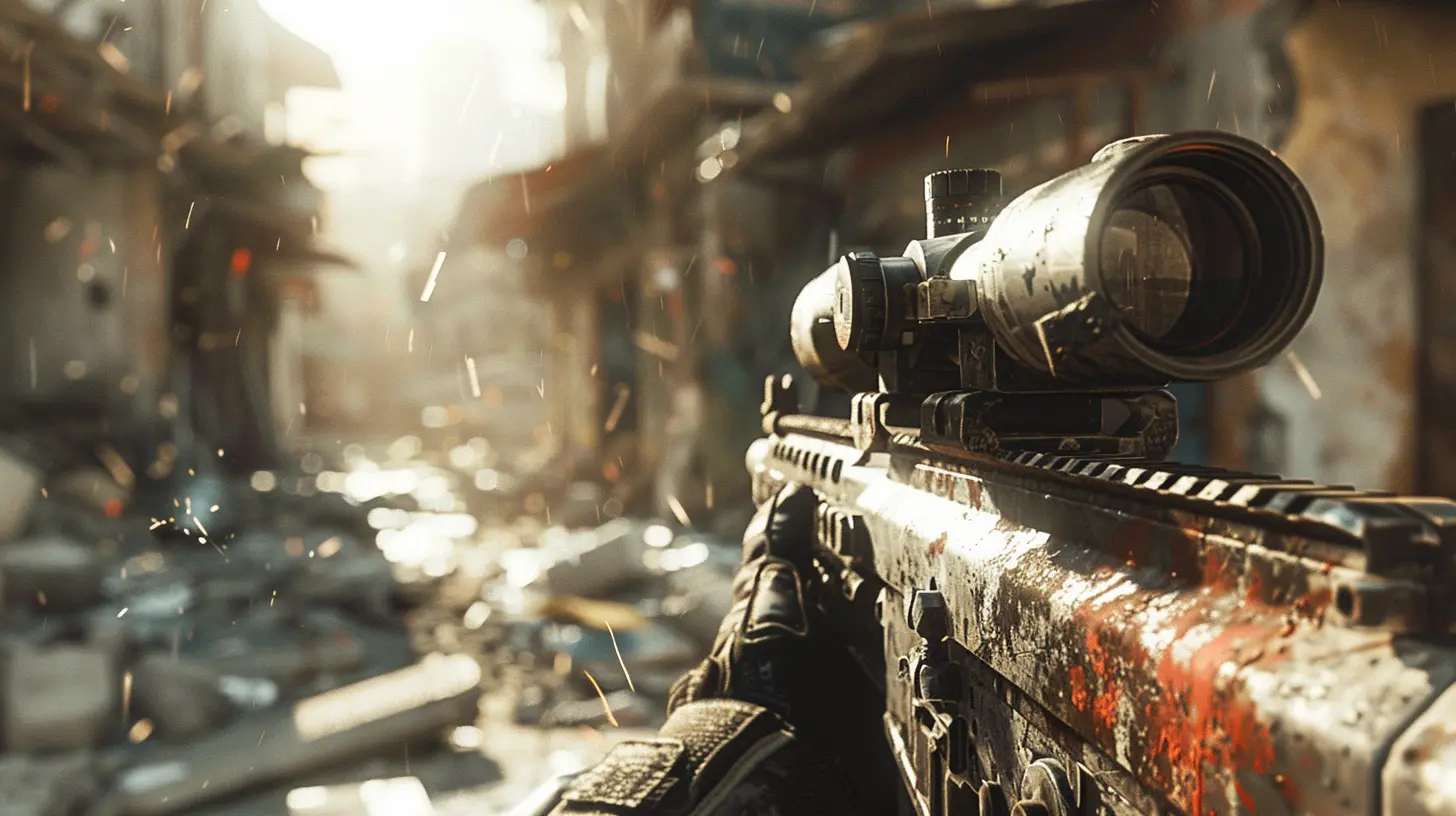
Why Third-Person Shooters Are a Visual Treat
Ever played a third-person shooter and found yourself stopping mid-fight just to admire the lighting? Yeah, same here.Unlike first-person games—where your field of view is essentially limited to what your character sees—third-person shooters give you the whole stage. You can see your character dodge, roll, and pull off slick moves. Add in top-tier graphics and detailed environments, and suddenly every battle feels like it's directed by Michael Bay (minus the over-the-top explosions… or sometimes with them).
It’s not just about visuals for the sake of being pretty. These stunning aesthetics serve a purpose—they make the world feel alive, and that immersion? Chef’s kiss.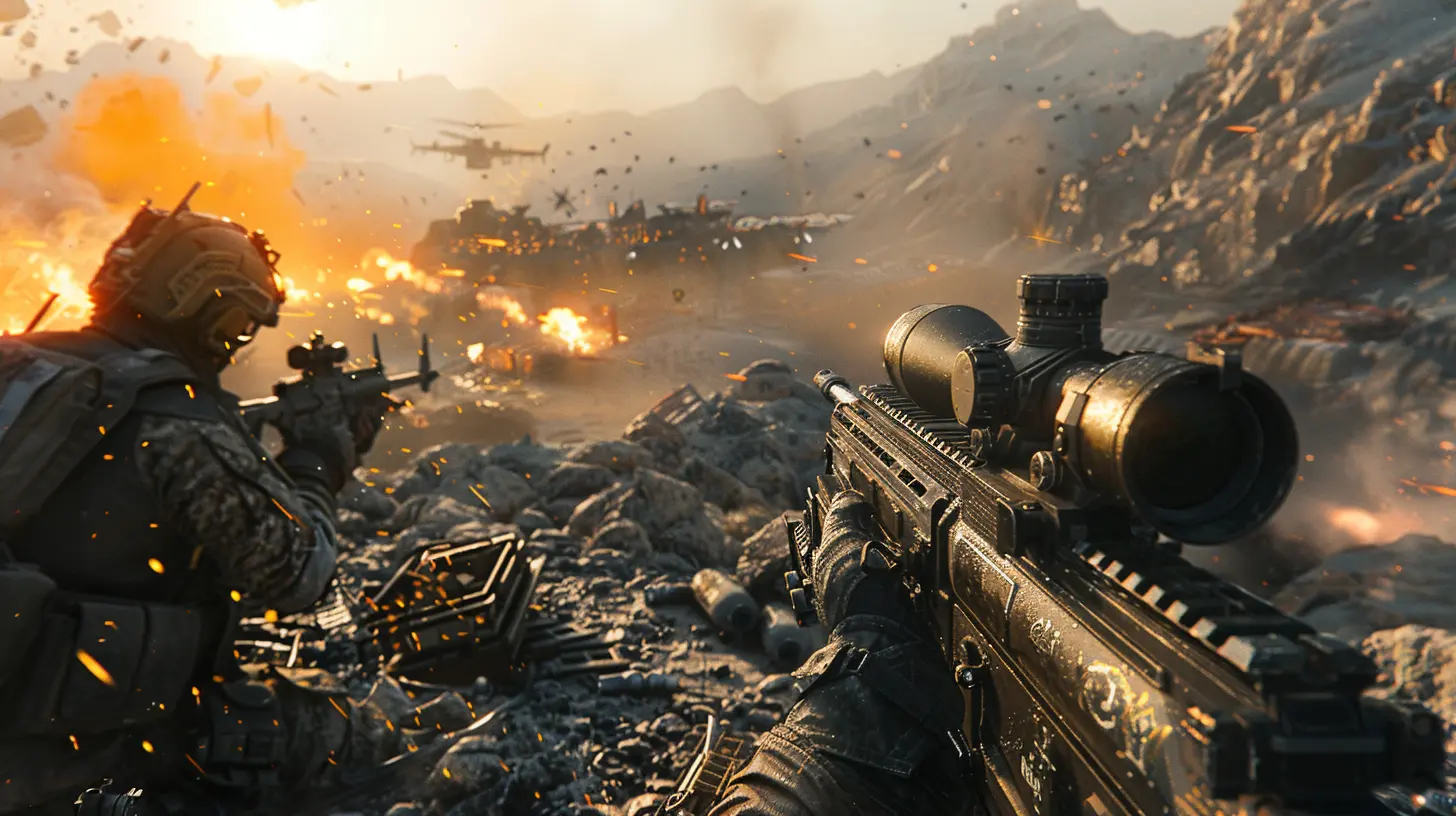
Visual Storytelling in Every Frame
Remember that time Nathan Drake (yeah, we’re talking Uncharted) was climbing a crumbling clock tower while bullets flew past his head and the camera swept dramatically around him? That’s visual storytelling at work.Third-person shooters often rely heavily on cinematic techniques to tell their stories. Dynamic camera angles, smooth transitions into cutscenes, and emotionally charged facial animations all contribute to creating an unforgettable narrative.
In many modern titles, you’re not just playing a game—you’re experiencing a story unfold in real-time, often without any obvious breaks between gameplay and cutscene. The barrier between player and storyteller is thinner than ever.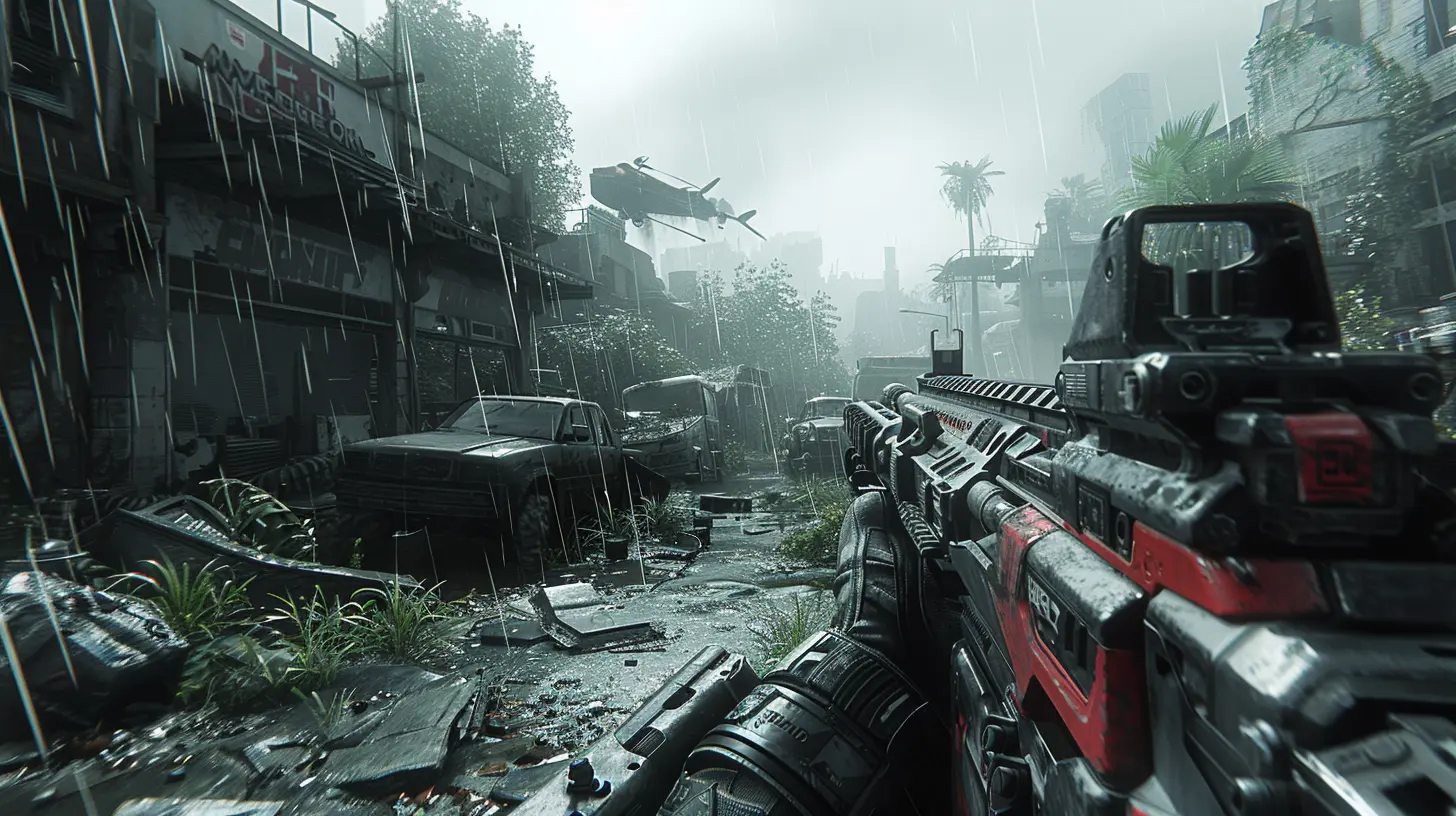
Games That Nailed the “Cinematics + Combat” Blend
So who’s doing it right? Who’s setting the gold standard for this new wave of visually stunning third-person action? Let’s break it down:1. The Last of Us Part II
Naughty Dog doesn’t play around. Every frame is dripping with detail—from the way Ellie breathes heavily after a melee fight to how the environment reacts to your actions. The transitions from cutscene to gameplay are so smooth, they’re almost invisible.Combat here isn’t just fighting; it’s emotionally driven, raw, and cinematic. And don’t get us started on the lighting. It’s basically digital cinematography with zombies.
2. Gears 5
Gears of War has always been a visual powerhouse, but Gears 5 really cranked it up a notch. The landscapes are vast and varied, the particle effects during combat are top-tier, and the character animations are freakishly lifelike.But what really sells the cinematic vibe is the pacing—the way the game builds tension with sharp dialogue, sweeping camera angles, and emotional beats mid-mission. It's like watching an action movie where you get to direct every explosion.
3. Control
Have you ever fought enemies in a building that constantly shifts around you like Inception on steroids? Welcome to Control.This game takes visual innovation to another level. The combat is wild, with particles flying everywhere, telekinetic powers twisting the environment, and lighting that would make any cinematographer swoon. When you’re in the middle of a battle and the world around you is literally collapsing in slow mo—it’s unforgettable.
4. Ghost of Tsushima
Okay, technically this leans more on action-adventure, but the combat is third-person and absolutely cinematic. Each duel feels like something out of a samurai epic. The cherry blossoms, the wind, the slow-motion sword strikes—this game treats every frame like a work of art.You almost feel guilty slashing your enemies because you might miss the dramatic lighting on their armor.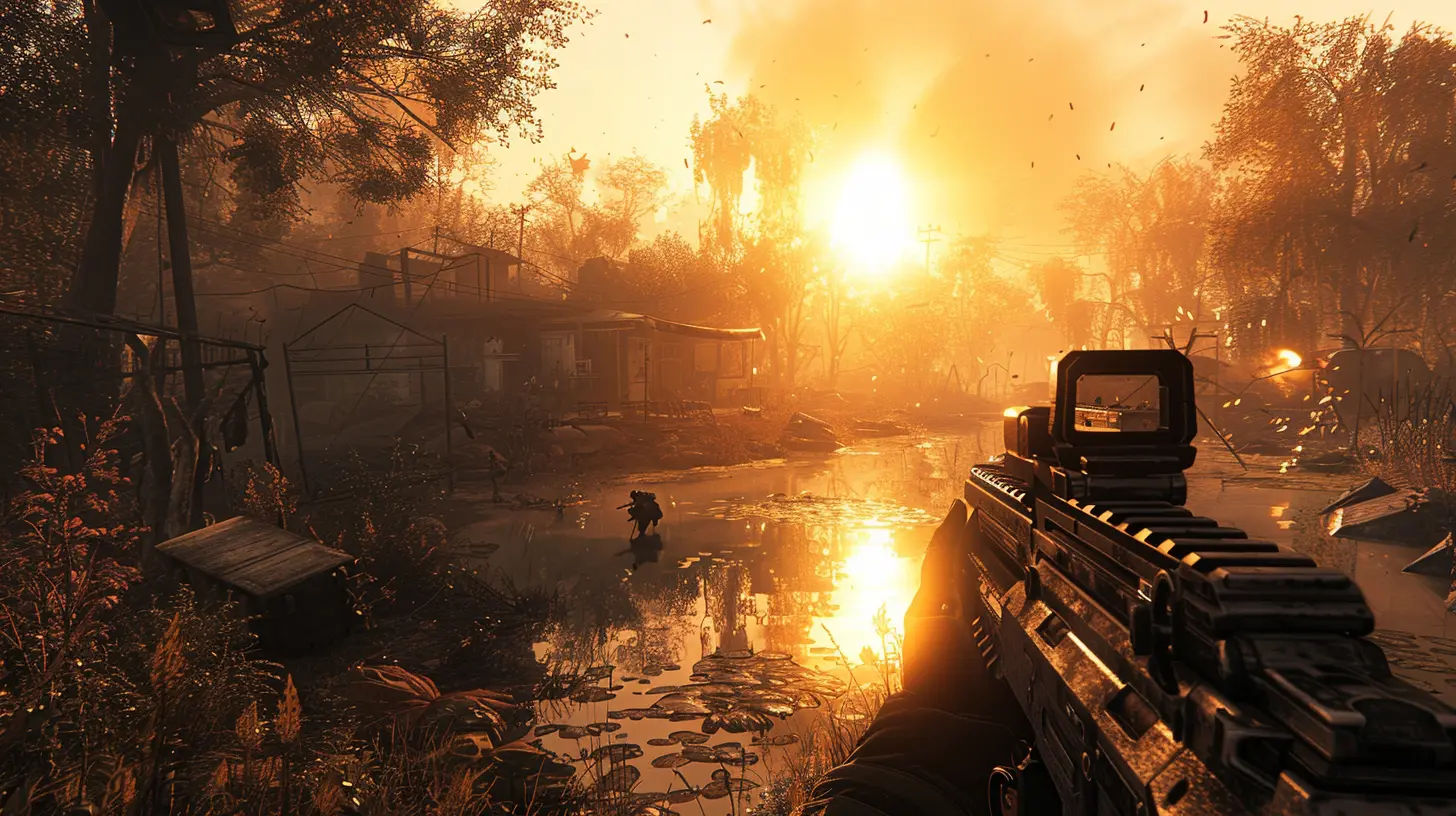
The Tech Behind the Beauty
Alright, let’s nerd out for a second. What’s actually making these games look and feel so cinematic?1. Motion Capture Magic
Thanks to motion capture, we now have characters that move like real humans. Subtle facial twitches, realistic running strides, awkward post-hit stumbles—they add SO much emotional weight.2. Cinematic Cameras
Developers are now incorporating film-level camera work into games. They use wide shots for tension, tight shots for emotion, and sweeping pans for pure eye candy. Gamers are becoming amateur directors by default.3. Ray Tracing and Lighting Systems
Lighting can totally change the mood of a game. Modern lighting engines, like RTX-enabled ray tracing, allow for ultra-realistic light, shadow, and reflection details. This transforms every shootout into a visual spectacle.Impact on Player Immersion
So why does this all matter? Because the more real the game looks and feels, the more immersed we become.When you’re locked in an intense gunfight and the sparks from ricochets actually light up the wall behind you—it does something. It tricks your brain into believing, for just a second, that you’re not holding a controller. You’re living it.
This level of immersion turns even the simplest encounters into moments worth remembering. You’re not just “playing a level”; you’re stepping into someone else’s boots and navigating a cinematic warzone.
Cinematics Aren’t Just for Cutscenes Anymore
Big change from back in the day, right? Used to be, cinematics were short movie-like clips you watched before or after gameplay. That’s old news. Today’s best third-person shooters weave cinematic moments right into the action.Think about God of War (2018)—no camera cuts. Not one. From start to finish, it’s a continuous shot. That’s bold. That’s ambitious. And it totally pays off.
This level of dedication to craft shows how far gaming has come. We’re not just pressing buttons anymore; we’re participating in visual storytelling.
How Cinematics Influence Combat Mechanics
Here’s something you might not have thought about—cinematics actually influence how combat feels.1. Slow-Motion Sequences
Timed dodges or perfect shots often trigger cinematic slow-mo. This doesn’t just look cool—it gives you a moment to breathe and appreciate the choreography of your own actions.2. Environmental Interactions
Third-person perspective lets you see how your character interacts with the world. Sliding behind cover, scaling walls, or dodging enemy fire isn’t just functional—it’s visually engaging.3. Dynamic Reactions
Enemies don’t just fall over. They react to where they’re hit, stumble realistically, or even call out in pain. These little touches amplify the cinematic tension and drama in real-time.The Role of Sound and Music
We can’t talk visuals without giving a shoutout to the unsung hero of cinematic immersion—sound.A thunderous orchestral score swelling during a firefight? Goosebumps. The crunch of gravel underfoot, echoing in a cavern? Instant atmosphere. Games like Red Dead Redemption 2 and The Last of Us absolutely nail ambient audio and music cues, drawing you deeper into the on-screen action.
Sound design + stunning visuals = a match made in cinematic heaven.
What’s Next for Third-Person Shooters?
Good question.With Unreal Engine 5 pushing graphical limits, and real-time motion capture becoming more accessible, third-person shooters are poised for even more jaw-dropping moments. Expect more seamless transitions, deeper emotional beats, and outrageous, over-the-top visual spectacles.
We could even see AI being used to dynamically generate scenes based on how you play. Imagine a game that adjusts its cinematic style to match your aggression or stealth level. Wild, right?
Final Thoughts: More Than Just Pretty Pixels
At the end of the day, the best third-person shooters offer more than just trigger-happy gameplay—they offer experiences. They combine cinematography, character depth, and crisp combat into one unforgettable package.So the next time you’re pinned down in gunfire, don’t just focus on the enemies—take a second to appreciate the way the sunlight filters through the smoke, or how your character’s silhouette moves like something out of a movie.
Because when cinematics meet combat, gaming reaches a whole new level.
all images in this post were generated using AI tools
Category:
Third Person ShooterAuthor:

Kaitlyn Pace
Discussion
rate this article
1 comments
Gabriella Marks
In a symphony of pixels and gunfire bright, Cinematic dreams collide with thrilling fight. Each frame a canvas, each shot a tale, Where visuals and valor together prevail. In this dance of art, let adrenaline sail.
September 12, 2025 at 4:32 PM

Kaitlyn Pace
Thank you for your poetic insight! You beautifully capture the essence of how visuals and action intertwine in third-person shooters.
